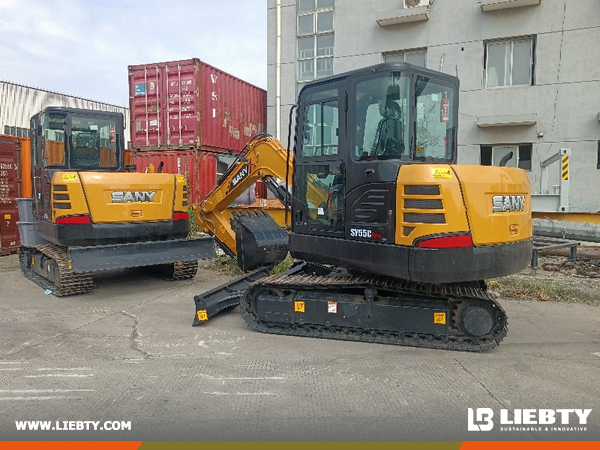NEWS & EVENTS
Excavator Usage Tips
Excavators, also known as backhoes, are earthmoving machines that use a bucket to excavate material above or below a supporting surface, load it into a transport vehicle, or unload it into a stockyard. I don’t know how much everyone knows about the use of excavators. Next, I will take you to learn more about it.
Excavator usage skills:
1. Operation technology
First confirm the surrounding conditions. When rotating, pay attention to surrounding obstacles and terrain, and work safely; during operation, confirm the front and rear directions of the track to avoid tipping or collision; try not to face the final drive in the direction of excavation, otherwise the traveling motor or hose may be easily damaged; During operation, ensure that the left and right crawler tracks are in complete contact with the ground to improve the dynamic stability of the entire machine.
2. Effective mining methods
When the bucket cylinder and the connecting rod, and the bucket rod cylinder and the bucket rod form a 90-degree angle, the digging force is the largest; when the bucket teeth and the ground are at a 30-degree angle, the digging force is the best, that is, the soil cutting resistance is the smallest; use the bucket rod to dig When doing this, make sure the angle range of the stick is between 45 degrees forward and 30 degrees back. Using the boom and bucket together improves digging efficiency.
Noteworthy operations:
The hydraulic cylinder is equipped with a buffer device that gradually releases the back pressure when approaching the end of the stroke; if the piston is subjected to an impact load after reaching the end of the stroke, it will directly contact the cylinder head or bottom, which can easily cause an accident. So try to leave as much clearance as possible when you reach the end of the stroke.
Rotating dozers can cause abnormal stress on the bucket and working equipment, leading to deformation or cracking of welds, or even broken pins. Such operations should be avoided whenever possible.
Excavation using the weight of the fuselage will cause abnormal stress states of the slewing bearing and produce strong vibration and impact on the chassis. Therefore, using hydraulic cylinders or hydraulic lines can cause a lot of damage.
When loading and unloading heavy materials such as rocks, unload them near the bottom of the carriage, or load soil first and then rocks. Unloading at high altitude is prohibited to reduce impact damage to the truck.
When the track is deep in the mud, place a board under the bucket, use the bottom of the bucket to support the track, and then place a board under the track to push the machine out.
Correct crushing operation:
First place the hammer head vertically on the object to be broken. When starting the crushing operation, lift the front body about 5cm. When crushing, the crushing head should always press on the broken object. After the unbroken objects are broken, the crushing operation should be stopped immediately during the crushing process, because the vibration will gradually change. The direction of the hammer head should be adjusted at any time by adjusting the bucket cylinder so that the direction of the hammer head is perpendicular to the surface of the broken object.
When the hammer head cannot hit the broken object, the crushing position should be changed; continue crushing at the next place for no more than one minute, otherwise it will not only damage the hammer head, but also cause the oil temperature to rise abnormally; for hard objects, gradually break from the edge .
It is strictly prohibited to break while rotating, twist after inserting the hammer head, use the hydraulic hammer horizontally or upward, and use the hydraulic hammer as a chisel.


